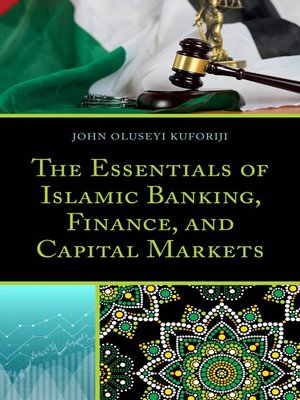
Sign up to save your library
With an OverDrive account, you can save your favorite libraries for at-a-glance information about availability. Find out more about OverDrive accounts.
Find this title in Libby, the library reading app by OverDrive.



Search for a digital library with this title
Title found at these libraries:
| Loading... |
This book provides comprehensive analysis in the areas Islamic financial institutions and society. It starts off with the integration of the Islamic socio-economic and socio-political systems with the Islamic financial sector; with a view to help in removing some of the stereotype views that people have on the Islamic society and religion. In doing this, it provides the readers with an understanding of the Islamic society, characteristics of an Islamic society, and Islamic economics thoughts and theories. It goes further to make the readers to understand the sources, evolution, and guiding principles and practices of the Islamic finance and commercial jurisprudence. Although the book acknowledges the innovative no-interest financing framework; but in the absence of zero cost of lending, it develops an Islamic interest rate theoretical framework structure based on the profit-margin concept of the Islamic financial system. It goes on further to cover the structures, roles, functions, and monetary policies of the Islamic central banks in the absence of interest rate as well as proposes that organizational structures for the Islamic central banking system should include an Islamic finance division to oversee and monitor the Islamic financial institutions squarely. Flow charts are used to explain the structure, operations, models, products, instruments, and services of the Islamic commercial banks, financial institutions, insurance, and capital markets. This helps the readers to understand the dichotomies between the Islamic and conventional financial systems. It provides detailed systematic, logical steps, and processes involved in the Islamic financial transactions with the use of flow chart graphs which will help the readers in grasping the essentials of the Islamic financial sector; which will help the readers to understand the step-by-step processes and facilitate the conceptual clarities involved in the product deliveries and processes of the Islamic financial institutions. The book's concluding chapters were devoted to the performance, achievements, governance, challenges, and future expectations of the Islamic banking, finance, and capital markets. The book concludes with some suggestions on how to make the Islamic finance and its products more acceptable to the entire world; especially to the non-Muslim community of the world.






